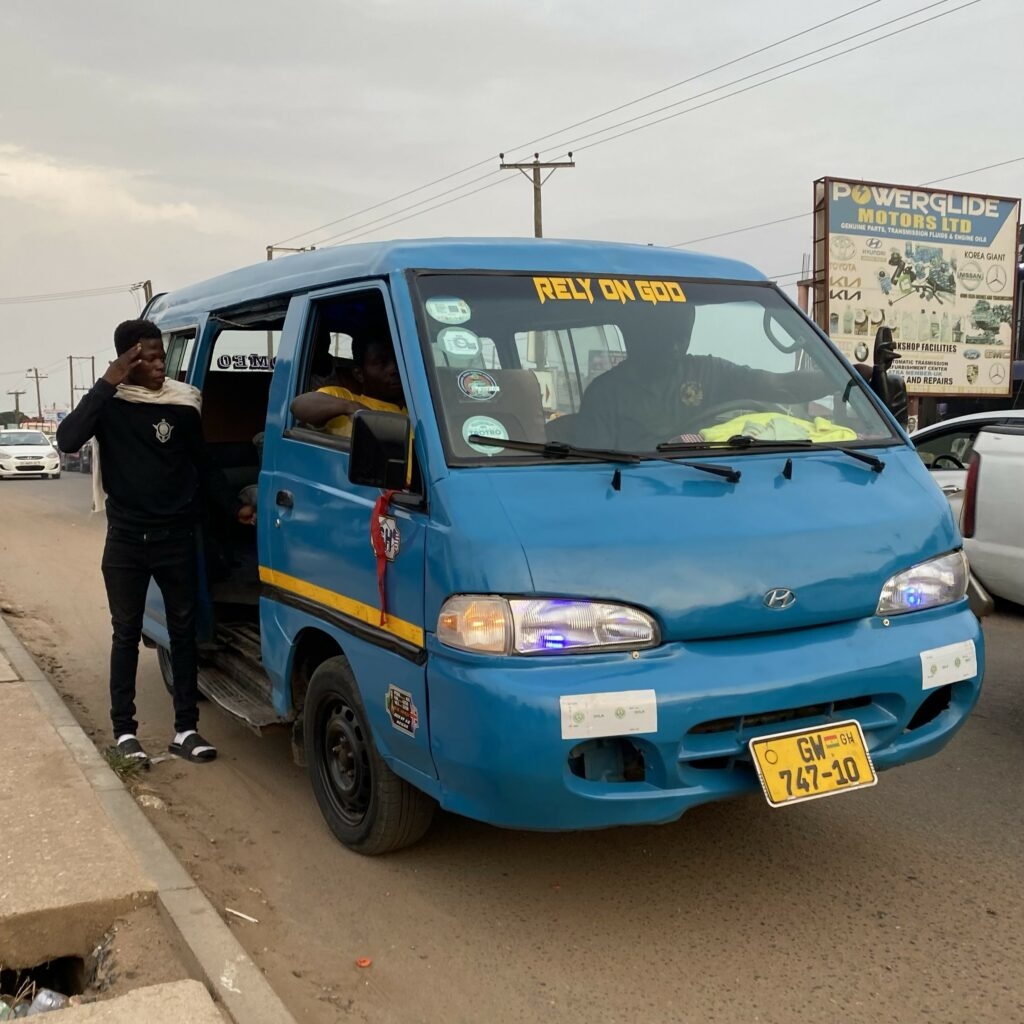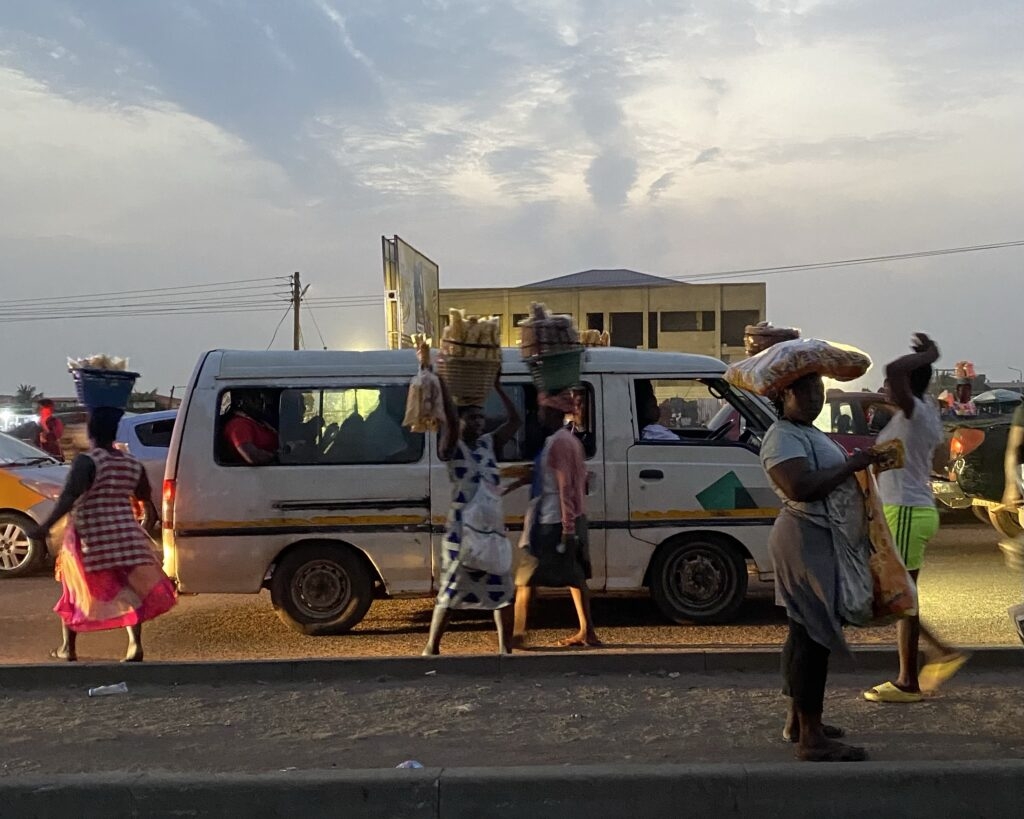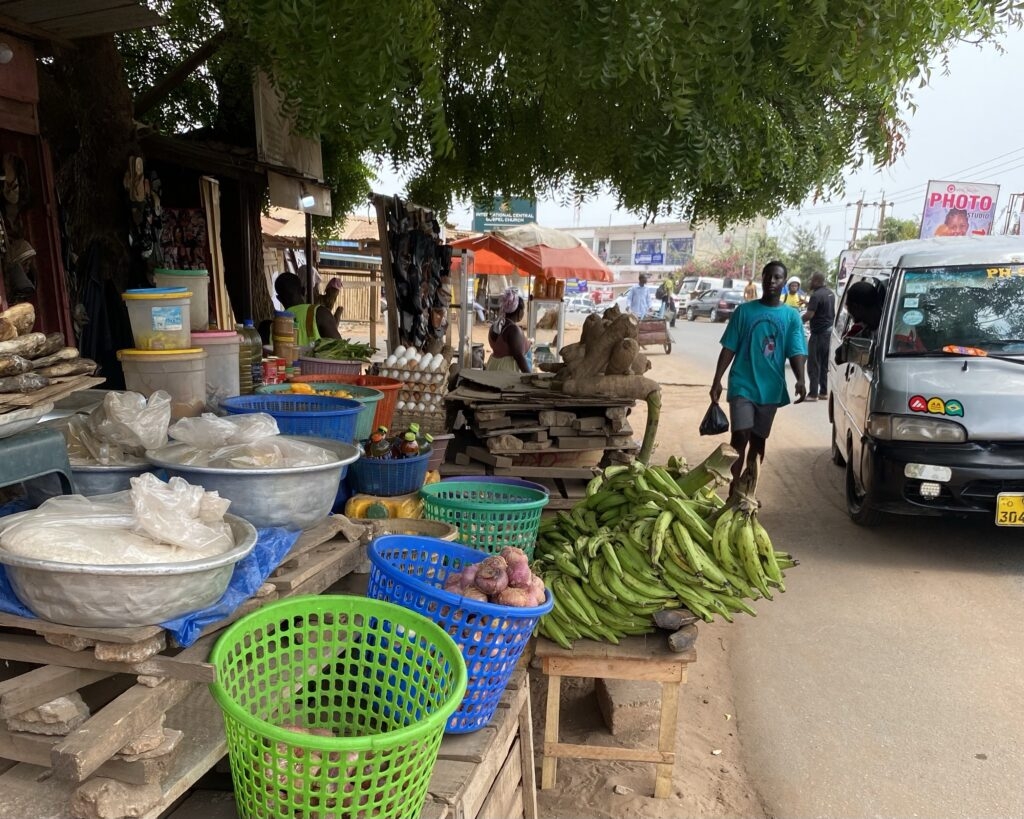One of the things I love about travel is the transportation experience. Every city does transportation differently, from the types of vehicles in use, to the public transport network, and the roadway planning itself. Understanding these elements paints the picture of the daily life and commute of residents.
While we were in Ghana we visited two major cities and their surroundings: Accra and Kumasi. I felt that the transportation experience for the most part, was consistent across both. The primary difference was that the roadways were in much better condition in and around Accra. In both cities we relied mostly on the communal trotro and though ride-share is another popular option, taking a trotro is certainly more exciting!
What is a trotro?
A trotro is a large, privately- owned passenger van operated by a driver and a mate, typically retrofitted with additional seats. I can’t quite recall if they have 12 seats or 15 on average, but I would like to make note that the number of seats does not indicate the total capacity*. (*Typical of most vehicles in Ghana.)
Trotros range in their age, condition and safety potential: but I can assure you that you will never find one that is brand new. They all bear some form of welding scar, having been reconstituted from parts and scraps of no less than 5 other vehicles*. (*Author’s sparing estimate.)

Informally formal
The fascinating part about the transit network is that it has been informally formalized. You won’t find routes on any website, and neither Google nor Apple Maps can help you. There are no marked trotro stops or signage, and very few stations exist. The wonderful part about this is that everybody just knows where they are going. This is due to the fact that somehow, all of these independent drivers take the same roads and make the same stops as all of the others.
Navigation
The best way to navigate on your own is to think in terms of landmarks and junctions. A market or civic building is a great example of a landmark and a major intersection or town name would qualify as a junction. You’re going to have to look at a map to understand that a trip from Edwenase to Abrepo requires a change at Old Tafo Junction and again near Kejetia Market.
Rider’s Guide
Catching a trotro can be delightfully simple if you’re in the right place. If you aren’t, you’ll find out soon enough. The trick is to walk down the road along your route, and keep a keen eye and ear open for the telltale signs: a van pulling off to the side, or the weird kissing/zipping noise that the mate makes.
Seating arrangements are straightforward, but loading and unloading involves some etiquette. Be mindful of how many passengers are alighting with you, and go towards the back if you can. If you end up in an aisle seat, be aware that you’ll be shuffling off and on again every time someone behinds you gets off.
The Mate
All Trotros require both a driver and a mate to function well, but it’s the mate who really runs the show.
He or she is responsible for: scouting and calling on prospective riders; calculating and collecting fares based on your origin and destination; signalling stop and go to the driver; and the allocation of seats.
You’ll most likely find them at the second row passenger side door, the first jump seat, the front row passenger side, or hanging onto the outside of the moving vehicle.

Amenities (or, “how to get snacks”)
This is my favorite part – don’t judge me.
Snacks happen in three places: stop lights, interchanges and slow traffic. When traffic stalls merchants fill the road, walking single file past vehicles and offering treats like bofrot, peanut brittle, plantain chips, juice, frozen yogurt, and water.

Opportunities
Knowing that the routes have informally come to exist gives me great reason to believe that they will continue to exist: they are a ‘trace’. The trotro routes through the city are like the well-worn footpaths through a field: the most common way to get from point to point.
Plotting the trotro network would be a great asset for municipalities and prospective business owners to make informed decisions. Local governments and institutions could make use of these junctions or hubs for local offices, registrars, and the distribution of services. Businesses of all sizes could use this design strategy to attract customers or clientele.
Strategic design interventions can be leveraged to drive even more traffic to a site. Currently the trotros stop within a loosely defined range, but adding thoughtful amenities at the roadside could influence this. Benches, shading, or shelter could provide rest and refuge, while fruit trees or water could help nourish citizens.
Trotros are an essential part of Ghana’s culture and fabric, and an asset to governments. businesses owners and citizens alike.

Related topics
- Urban design
- Environmental Psychology
Leave a Comment